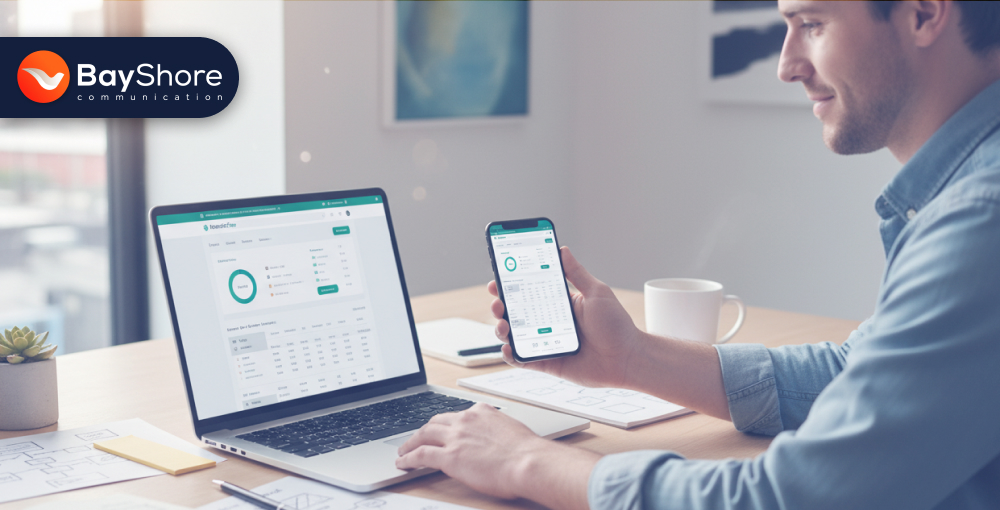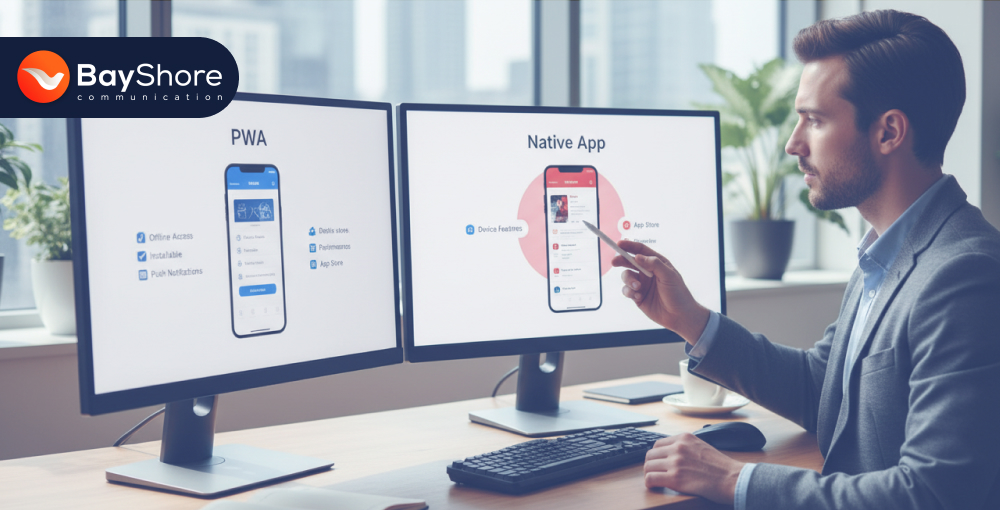
Progressive Web Apps (PWAs) are changing how service-based businesses reach and engage their customers. You might think of them as the sweet spot between a website and a mobile app. They load fast, work offline, and don’t require an app store download. For service businesses, that means your customers can book, browse, or connect with you instantly.
Still, most people only talk about the basics of PWAs: lower costs, quick loading, or simple updates. The real value of PWAs lies in how they can transform customer relationships and brand trust. They’re a smarter way to run your business in a mobile-first world instead of a tech upgrade.
Here’s where things get interesting. Everyone talks about how Progressive Web Apps (PWAs) are cheaper and faster to build, although there’s a deeper layer that rarely gets mentioned, the quiet ways they change how your customers connect with your brand.
For starters, PWAs turn casual visitors into repeat users. Because they load directly from a browser, anyone can access your service with a single click. No app store, no hesitation. When your customer adds your PWA to their home screen, it becomes a little reminder of your business sitting right next to their favorite apps.
Then there’s engagement, where push notifications give you direct access to your audience without the noise of social media algorithms. You can remind them of a scheduled appointment, a new offer, or a service update without feeling intrusive. It’s simple, personal, and it builds trust over time.
Another thing many businesses miss is how PWAs help you show up in search results. Since search engines can index PWAs, your app can bring in organic traffic just like your website does. For a local service business, that’s gold. Imagine someone searching for “pet grooming near me” and finding your PWA right at the top, ready to book in seconds.
PWAs give small businesses the same performance edge as tech giants. They load fast, adapt to any device, and deliver a consistent experience everywhere. That reliability quietly builds credibility. Customers might not notice the code behind it, although they definitely feel the difference.
So while the world debates app stores and downloads, your business can simply be there, ready, quick, and one tap away from your next loyal customer.

No technology is flawless, and while PWAs offer many benefits, they also have limitations, such as restricted access to certain device features and potential performance issues on older browsers. They’re powerful, yes, although it’s important to know where the limits lie before you decide to dive in.
For one, PWAs can’t always match the deep functionality of native apps. Features like Bluetooth connectivity, advanced camera use, or heavy background processing are still best handled by traditional apps. If your business depends on those capabilities, a PWA might not cover every need.
Another common issue is Apple’s limited support for some PWA features. While Android users get the full experience, iOS users might find that push notifications or background syncs don’t always work smoothly. It’s improving each year, although it’s still something to plan for if a big part of your audience uses iPhones.
Then there’s the question of visibility. PWAs don’t live in app stores, which means you won’t get the automatic exposure that comes from being listed on platforms like Google Play or the App Store. However, if your business focuses on local clients, smart SEO and direct sharing can fill that gap beautifully.
And here’s something that often surprises people: updates in PWAs happen instantly. It usually is, although it also means users don’t have the option to hold onto an older version. If something goes wrong in an update, it affects everyone at once.
So yes, PWAs are an incredible tool for service-based businesses. The key is balance, understanding where they shine and where you might need a little backup from traditional systems. When used right, they can become the bridge between convenience and performance, which is exactly where modern businesses thrive.
Let’s look at how some of the biggest names turned PWAs into growth engines. These examples show what happens when smart technology meets real customer needs.
Take Starbucks, for instance. Their PWA made ordering coffee possible even in areas with weak internet. It’s 99.84% smaller than their iOS app and helped double the number of daily web users placing orders.
Customers can browse the menu, customize drinks, and add items to their cart even when offline. The order goes through as soon as the internet reconnects. That’s convenience at its finest.
Then there’s Uber, a service that depends entirely on speed and access. To reach users with slower networks, Uber created a PWA that’s only 50kB in size and loads in 3 seconds on 2G. Riders can request a trip no matter their device or connection quality. This move helped Uber grow in markets that native apps simply couldn’t reach.
Another standout example is Trivago, which used its PWA to deliver faster hotel searches and comparisons. The result was striking, which is a 150% increase in user engagement and over half a million installs. Travelers could now explore options easily without having to download an app.
These success stories highlight one clear truth: PWAs make service businesses more accessible, efficient, and user-friendly. Whether it’s coffee, travel, or local services, they help companies stay connected with customers in the moments that matter most.

Here’s where the decision gets real. You know PWAs can save money and speed up launch time, while native apps can offer deeper device integration and visibility. So which one fits your business best? Let’s break it down together.
Choose a PWA if:
You want broad reach without downloads. Perfect for customers who interact occasionally, such as booking a spa session, checking service hours, or browsing promotions, PWAs let businesses stay top-of-mind without requiring app downloads, creating a seamless, accessible experience for casual users.
Cost-effectiveness matters. One PWA works across iOS, Android, and desktop, keeping development and maintenance costs lower.
Speed is a priority. Launch quickly, roll out updates instantly, and test new features without waiting for app store approval.
SEO is important. PWAs are fully indexable by search engines, which means your business can attract organic traffic from people actively searching for your services, helping increase visibility, reach new customers, and drive more engagement without relying solely on paid advertising.
Consider a Native App if:
Your service relies on advanced phone features. GPS tracking, biometric payments, and Bluetooth connectivity are handled better with native apps.
You need premium performance. Complex tasks, real-time updates, or graphics-heavy interactions run smoother in native apps.
App store visibility is crucial. Being listed on Apple App Store or Google Play provides credibility and discoverability for your brand.
Your audience expects a platform-specific experience. Native apps meet high expectations for design, performance, and familiarity on iOS or Android.
PWAs are ideal for reach, speed, and cost-efficiency, while native apps excel in deep functionality and platform-specific experiences. Bayshore Communication helps you make the right choice and craft the solution that fits your business goals.

Having a PWA is not enough and what really matters is how it fits into your business goals, your audience, and the way you deliver your service.
Our team understands that a great user experience is more than just speed or design. It’s about creating an online space where your customers feel seen and supported every time they interact with your business. Whether you run a salon, a repair service, or a local travel agency, we build PWAs that reflect what makes your service unique.
We focus on performance, accessibility, and engagement. That means your PWA won’t just load fast, it will guide users to take action, stay longer, and come back again. Imagine your clients booking appointments, tracking updates, or chatting with your support team in seconds, without waiting for downloads or updates.
At Bayshore Communication, we take care of the technical side so you can focus on growing your business. From smooth offline access to user-friendly design and SEO optimization, our approach ensures your app runs beautifully on any device, for any customer.
PWAs are changing how service businesses connect with people, and Bayshore Communication helps you stay ahead of that curve. When your customers can reach you easily, no matter where they are or how fast their internet is, your business becomes unstoppable. Reach out to us today to explore how a PWA can boost your customer engagement and grow your business.